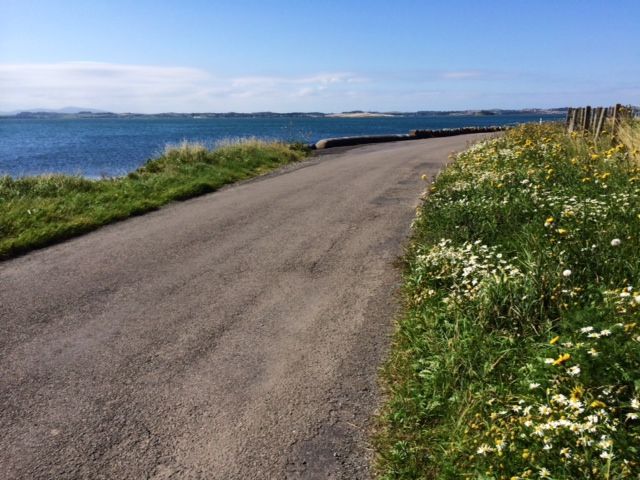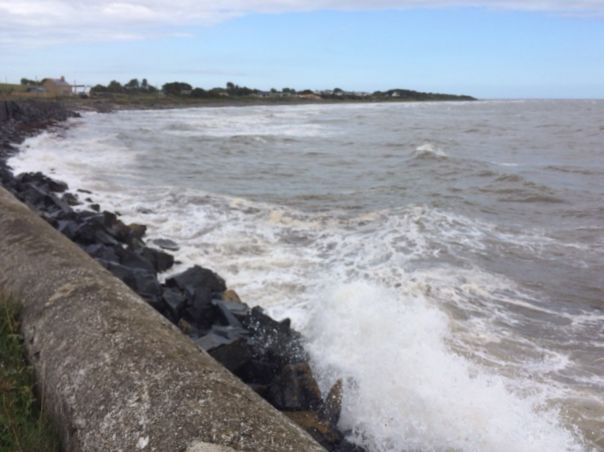
The Ards Peninsula is the narrow finger of land that encloses Strangford Lough, the largest sea inlet in Ireland and Britain. The eastern side of the peninsula is exposed to the full brunt of the Irish Sea, and rocky and pebble shores dominate. Seeing the numerous flocks of gulls roosting on the grassy fields, sheltering from the rough weather conditions, is never a good sign for cycling. And passing Burr Point, the most easterly point of Northern Ireland, I noticed Manx Shearwaters passing by no more than 50 metres offshore. As I struggled with the strong south-westerly winds, I realised that Manx Shearwaters and lightweight carbon road bikes are strange bedfellows indeed.
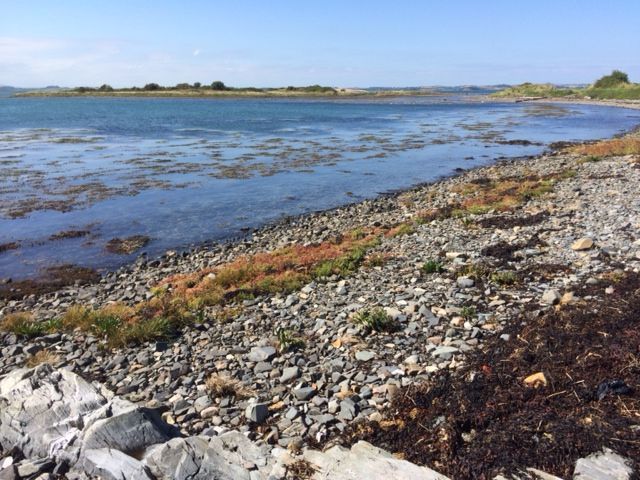
But rounding the southern tip of the Ards Peninsula at Portaferry and into womb of the magnificent Strangford Lough was like entering another world. Sheltered from the wind, the exposed coastline gave way to a gentle, rolling pastoral landscape, the clouds parted and I was even bathed in warm sunlight. At Portaferry the choice presented itself of an 8 minute ferry ride to Strangford cutting across the narrow neck of the Lough or cycling the inner Lough, a roundtrip of 90km. But it wasn’t a choice really as I couldn’t miss experiencing the beauties of the largest sea inlet of these islands.
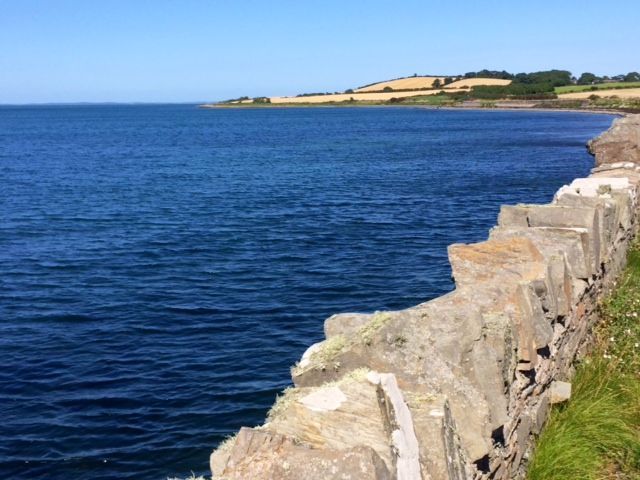
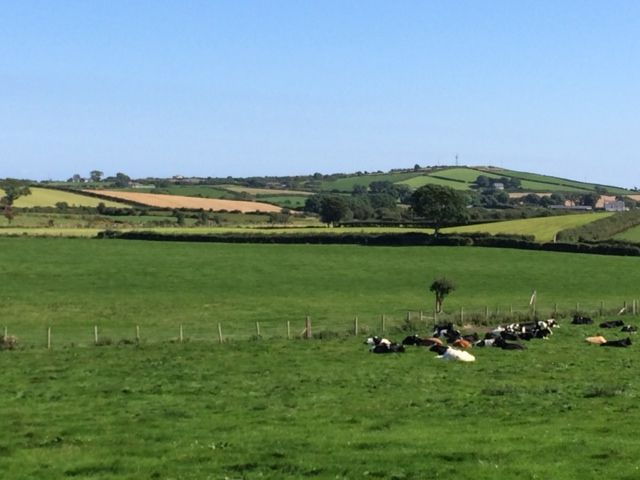
Strangford Lough is one of the great treasures of these islands. It is a huge sheltered sea inlet and of remarkable nature conservation interest. That it is designated as a Special Area of Conservation, a Special Protection Area, a Ramsar Site, an Area of Special Scientific Interest and a Marine National Reserve, makes the point fairly forcefully. Given its setting, it is hardly surprising that it rich natural resources have been utilised for generations, and aquacultre has a long tradition here, stretching back to at least the 1700s when there was a thriving industry of seaweed harvesting for soda production. In recent years it is better known for harvesting of oysters, both the native edible oyster and the introduced Pacific oyster – the latter having been introduced to Strangford as part of trials in 1970. And the harvesting of these non-native species has proven more popular for they tend to grow quicker, show greater tolerance to disease and can be grown in a wider set of environmental conditions than the native oyster. But the impact of the Pacific oyster on our native edible oyster is raising conservation concerns.
For me, Strangford Lough is synonymous with winter birdlife. In winter, it supports a remarkable concentration of birds, up to 25,000 wildfowl and 50,000 waders. It is of prime importance as a staging post for about three quarters of the world’s population of the Light-bellied Brent Geese that stop over here in October to feed up on the extensive eelgrass (Zosetera) beds, before dispersing throughout the island. But the site also supports internationally important populations of Knot and Redshank.
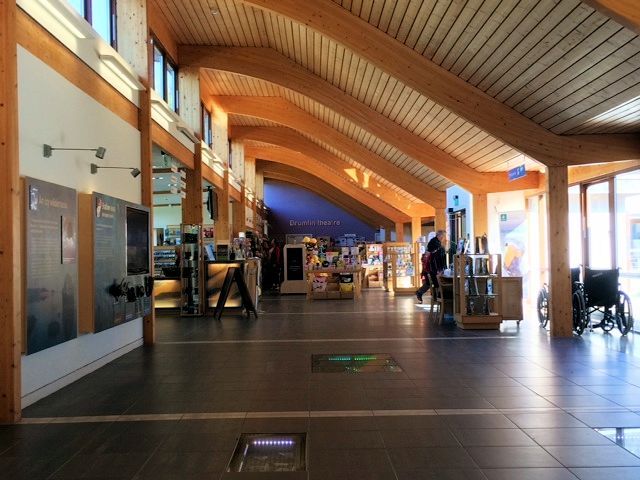
To capitalise on this wonderful birdwatching spectacle, the Wetland and Wildfowl Trust has established a state-of-the-art Wetland Centre at Castle Espie, in the arm-pit of the lough. Here visitors can experience birdlife at close quarters. A series of walks and bird hides enable visitors to experience birdlife utilising different aspects of the coastal landscape; views opening onto wide estuaries, coastal lagoons, salt marsh and reedbeds, and walks through woodland, provide visitors with an unforgettable experience. The Centre has also used every opportunity to showcase the best of environmentally friendly practices, including use of renewable energy and recycling materials. The Centre is visited by 50,000 visitors annually, and even though we visited at a slack time of the year for birds, the Wetland Centre was bustling with activity.
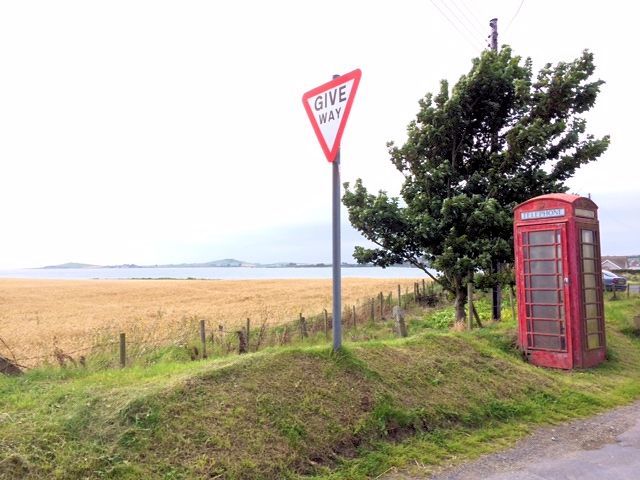
The availability of centres like this must do a great deal to promote knowledge and enjoyment of biodiversity, and help build support for conservation. I would really love to see a similar Centre established in Dublin City to help highlight the importance of the birdlife of Dublin Bay.

